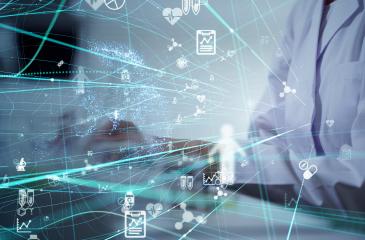Assistant Professor David Haynes of the University’s Institute for Health Informatics is trained as a health geographer. Through geographic information science—or GIScience—Haynes uses big data to analyze geographic information and spatial data to advance health and address health disparities. These tools offer answers to questions on whether dynamics of place increase the prevalence of disease in specific sub-populations.
GIScience methods have implications for a rapidly changing health care system in areas ranging from rural health to telehealth to population health.
In cancer care, for example, this research helps answer the questions on why certain populations have a higher cancer mortality rates in certain neighborhoods.
“Social determinants of health often present a huge barrier to those accessing care,” said Haynes.
In July 2021, Haynes will launch a pilot study offering a mobile app to patients at NorthPoint Health & Wellness Center, a Federally Qualified Health Center in North Minneapolis.
The app, called Smart Community Health, was developed by Haynes and a team of researchers to offer patients a comprehensive assessment in four categories: My Living, My Mind & Networks, My Body and My Self-Care. Based on that information, the app then connects people to community organizations providing the needed services and resources.
A focus on population health
“When people come to the doctor with underlying issues—lack of food, housing, poverty—there is a need to empower patients to get access to the resources they need,” said Haynes. “Through this tool, we hope to have a much better and real-time understanding of how people feel about these issues so that we can address the needs and trends. One goal is to help patients feel in control of their own health and empowered with the information they need to access services.”
Shaping the future of health care
Longer-term, Haynes and his colleagues want to apply techniques like disease surveillance to help understand and address population health needs more effectively.
“We know from census data which communities are impoverished, but we don’t have information on income or education in the electronic health record,” said Haynes. “If we had survey information from individuals on housing, nutrition and other needs, we could be more responsive for the population’s overall health. For example, when building a new clinic for a community, this information could help determine staffing, languages spoken by community members, common injuries in a particular population, and how to best meet the acute needs and respond to trends.”
As technology continues to change health care, Haynes sees great potential in data to improve care through integration with the patient’s electronic health record.
“Connecting this information to physicians and providers is key—and it’s also challenging,” said Haynes. “It all needs to be interconnected, so that patients and clinicians have the information they need to provide care and make the best decisions.”



